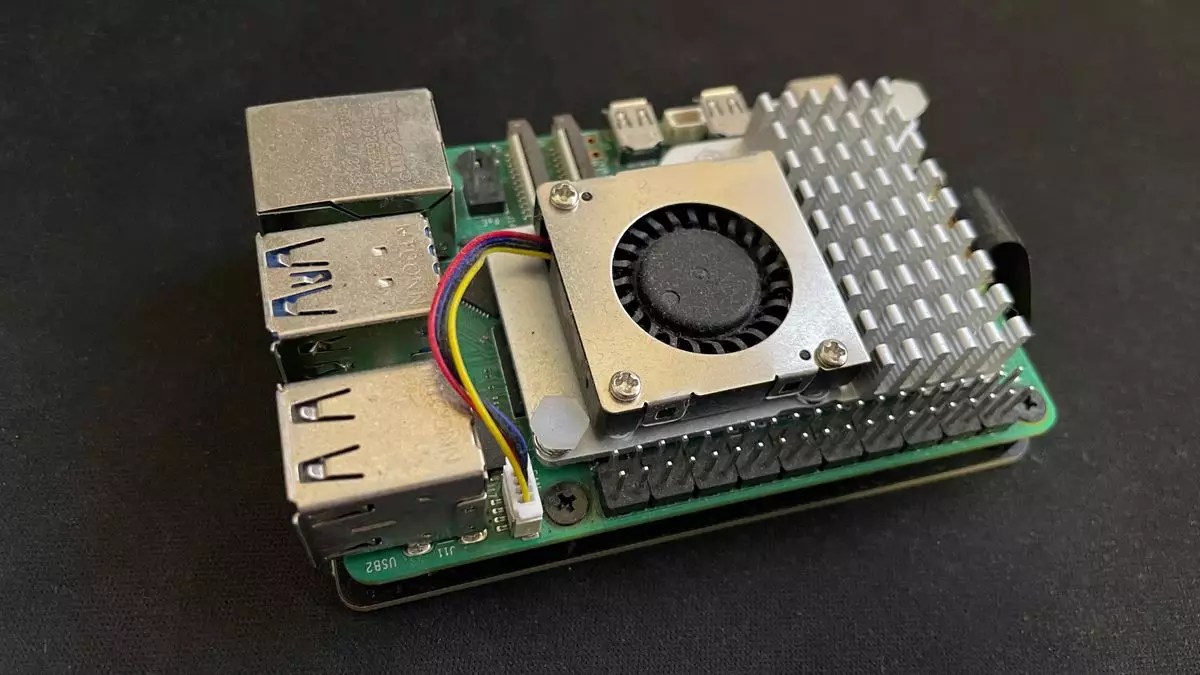The launch of the Raspberry Pi 5 in 2023 brought a wave of excitement and innovative possibilities, especially with the newly included support for PCIe drives. This advancement opens up avenues for transforming the Raspberry Pi into a more formidable desktop PC, capable of running a variety of applications including some light gaming. However, upon its release, the absence of official PCIe SSD solutions left many enthusiasts eager for more. Thankfully, recent developments have rectified this situation, appealing to both hobbyists and tech-savvy users.
The Raspberry Pi 5 marks a significant milestone in terms of performance, surpassing its predecessors with notable enhancements. While previous models like the Raspberry Pi 4 served well as learning tools or for simple projects, the Pi 5 makes a compelling case for being used more seriously as a desktop alternative. The inclusion of PCIe support means that users can leverage high-speed NVMe SSDs, which can drastically improve both boot times and application responsiveness compared to traditional MicroSD cards.
My initial tests with the Raspberry Pi 5 revealed not only the potential for everyday tasks but also a surprising capability for gaming. Trials of running classic titles, such as Doom 3, demonstrated the device’s ability to handle games at playably low resolutions. This unlocking of new functionalities sets the stage for a more versatile home computing experience. However, the inherent limitations of using MicroSD cards were highly evident, as they often resulted in prolonged loading times and limited data reliability.
Before the arrival of official SSD solutions, users had to navigate the murky waters of third-party products, often leading to mixed results. Opting for the Pimoroni NVMe Base to connect a Crucial P3 was a solution I pursued, but it came with its own challenges. Selecting the right SSD proved to be crucial, as not all drives perform optimally with Raspberry Pi devices. The meticulous nature of ensuring that the SSD would gel well with the Pi added a layer of complexity to the upgrade process.
Now that Raspberry Pi Ltd has released official SSD and M.2 HAT+ options, this headache is alleviated. The kits are assembled specifically for seamless integration with the Pi 5, simplifying the upgrade experience for both novices and seasoned users alike. No longer do users have to second-guess their choices when selecting compatible components; the dedicated kits allow for an out-of-the-box experience that maximizes performance from the get-go.
One of the intriguing aspects of the Raspberry Pi 5’s architecture is its inherent support for PCIe 3.0, despite official acknowledgment of only PCIe 2.0 speeds. For those looking to push boundaries, it’s fairly straightforward to unlock the higher speeds by tweaking the Pi’s config file. By adding the parameter `dtparam=pciex1_gen=3`, users can tap into the enhanced potential of their devices, ensuring that their SSD setups operate more efficiently. This level of customization is a testament to the Raspberry Pi community’s ethos, encouraging exploration and experimentation beyond conventional limitations.
Raspberry Pi’s recent SSD offerings have been priced competitively, which is a significant consideration for gaining traction among potential users. The entry-level 256GB SSD is attractively priced at $30, while the 512GB option comes in at $45. These prices, combined with the kits’ capability to deliver at least 40,000 IOPS, make these storage solutions both practical and appealing. Whether used for productivity or as a host for gaming applications, the affordability of these solutions makes venturing into the world of Raspberry Pi much more enticing.
Gaming enthusiasts can now envision more creative uses for the Raspberry Pi 5, going beyond standard computing tasks. The potential to run retro gaming emulators or even lightweight game titles makes it a hot contender in the compact PC market. The ability to seamlessly integrate storage solutions specifically tailored for gaming blurs the line between hobbyist tinkering and practical computing utility.
The addition of official SSD solutions for the Raspberry Pi 5 not only enhances its functionality but serves as an inspiration for what future iterations may hold. This pivot towards combining compact computing with powerful storage options marks a promising direction. Exciting developments like these signal an uplifting wave of creativity and capability within the Raspberry Pi ecosystem, paving the way for innovative projects, educational tools, and gaming revolutionaries alike. It is clear that the Raspberry Pi 5 is more than just a small board; it embodies the spirit of experimentation and innovation that continues to propel the maker community forward.


Leave a Reply